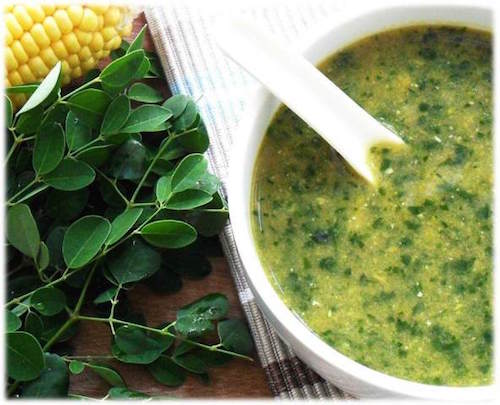Moringa Oleifera
Enjoy Moringa Oleifera
Moringa, drumstick tree, malungai are some common English names. I have eaten cooked malungai leaves but have never tried the leaf powder. Moringa leaf is high in protein and used to make many dishes in the Philippines and India. In India the pods are eaten and the taste is similar to artichoke or asparagus. The Spanish call Moringa Oleifera trees Asparugus Tree or Arbol do los aspáragos. I have also been told that children really enjoy eating this vegetable for they slide the pod against their teeth, chew the inside pulp, then spit out the inedible husk. It is not neem, it is not tamarind, it is not noni. It is drum-stick, a vegetable.
It has been reported (from amongst our experiences) to help with cystic kidney disease.
Drum-stick is an Indian vegetable that grows in long rods from the moringa tree. It is 6 inches to a foot long rods which can be found hanging from a grand moringa tree. It is green on the outside, similar to very long thin flat like string beans. The outside shell is very tough and non-edible. These pods can turn brown.
Moringa Oleifera, Drum Stick Plant, Indian Horseradish, Malungai leaves are known to be high in potassium, high in iron, and protein and perhaps might be one answer to ease world hunger. Folk medicine has said this vegetable is helpful for kidney disease, especially the long pods. In India the pods (30-60 cm long) are cooked in a sauce known as Sambar. In the Philippines the leaves are cooked in a chicken broth (perhaps a little wild chicken if you can catch one!) it is mixed with onion, garlic and young green papaya (which tastes a bit like chayote squash). The seeds due to the presence of mustard oil, have an antimicrobial effect. Indian medicine has used moringa for rheumatism. Efficacy for rheumatism seems plausible because of the stimulating effect of the isothiocyanates. It is also known as an aphrodisiac probably due to the relaxation of the pelvic musculature.
Nutritional Value of Moringa
Moringa leaves are rich in vitamins K, A, C, B6, Manganese, Magnesium, Riboflavin, Calcium, Thiamin, Potassium, Iron, Protein, and Niacin. Ounce for ounce, moringa contains seven times the Vitamin C found in oranges, four times the beta carotene of carrots, three times the iron of spinach, four times as much calcium as milk and three times the potassium of bananas. Moringa also contains all of the 8 essential amino acids and is rich in many flavonoids, including Quercetin, Kaempferol, Beta-Sitosterol, Caffeoylquinic acid and Zeatinb. It could be a good available food source for improvised nations.
25 grams daily of Moringa Leaf Powder will give a child the following recommended daily allowances:
Protein 42%
Calcium 125%
Magnesium 61%
Potassium 41%
Iron 71%
Vitamin A 272%
Vitamin C 22%
These numbers are particularly astounding; considering the nutrition from mulungai is available when other food sources may be scarce. The tree survives drought.
Moringa, malungai, or moringa oleifera is alkaline and is grown in many countries. It is easily cultivated. The leaves can be made into a soup. The vegetable long pods that are grown from the tree are called drumstick. It is high in low nitrogen amino acids, iron, potassium. Moringa seeds have many uses among them is water purification.
Some Possible Uses for Moringa
Diabetes
Myocardial Damage
Improves Kidney Disease
Improves Liver Disease
Boosts Immune System Protects Against Cancer
Protects Against Arthritis
Protects Against Inflammation
Beautifies Skin
Aids Digestion
Lowers Cholesterol
Water Purification
In the rat model moringa has been found to counteract the toxic effects of tylenol ingestion.
